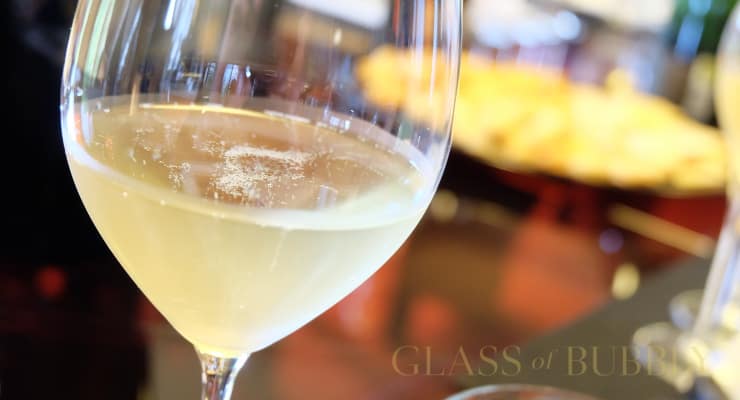Upheaval in Cava Land – Another Breakaway from the D.O.
13th February 2019

The Spanish CAVA denomination of origin has been in existence for more than thirty years, although the term, CAVA, has been used since 1972. During these decades, the number of recognized producers has increased from less than 90 to over 250 in the year 2000. However, at this time there are 215 registered cava producers, in reality, 206, as on February 1st, nine left the D.O., establishing the AVEC, Association of Vitners and Elaborators CORPINNAT.
This entity was established in the Spring of 2018 by six top-end cava producers; Gramona, Llopart, Nadal, Recaredo, Sabaté i Coca and Torelló. During the following months, Can Feixas, Julia Bernat and Mas Candi joined the group.
During those initial months, there was an apparently close rapport between the Cava Regulatory Board and the CORPINNAT wineries. However, as time and negotiations went on, complicated by the renovation of the board’s governing body, from the president on down, no totally common agreements were to be reached.

Amongst the very strict conditions set down by CORPINNAT are the modification of the territory where their sparkling wines’ vineyards can be cultivated – only within a specific area of some 22,966 hectares, 61% of the total vineyard surface of the Penedés area, tight controls over vineyards and grapes, 100% organic grapes, producers must use at least 75% of base wines from their own vineyards, minimum ageing of 18 months, the geographic indication of origin on labels and other requirements. Although many Cava producers do comply with one of several of the CORPINNAT requirements such as organic vineyards and grapes, wholly-owned vineyards and prolonged ageing, one of CORPINNAT’s principal requirements, the indication of geographic origin was quite possibly the primary obstacle, as many of the larger producers acquire great quantities of grapes and even base wines from external sources as they do not own sufficient vineyard acreage to meet their demands.
These conditions effectively discard the sparkling wines with Cava D.O. produced in a large part of the Penedés area as well as those made in the other parts of the Catalonia region, Valencia, Extremadura, Aragón, La Rioja, Navarra and Castille and Leon. According to the Cava Board, the production of the CORPINNAT wineries accounts for about 1% of the overall cava production, although these wineries produce some 30% of the Gran Reserva category and six are producers of the Paratge Qualificat – Singular Estate Cava of the total of 13 producers of this top-end classification created in 2016. None of the nine CORPINNAT wineries are major volume producers. In fact, only Gramona produces more than 500,000 bottles a year, while Nadal and Torelló do some 300,000 annually and the remaining six account for a few hundred thousand more bottles a year.
The CORPINNAT movement follows a similar separation by twelve wineries from the Cava D.O. in 2013 after arduous complaints and negotiations quite similar to those of CORPINNAT. These sparkling wine producers established what is known today as Clàssic Penedés. Several of these were also prestige cava producers, although again with limited production figures. The Clàssic Penedés group now numbers 18 wineries, all within the Penedés D.O.
Still another historic “divorce” from the Cava D.O. was that of Raventós i Blanc, founded by Josep María Raventós i Blanc in 1986 in “protest” against policies of the Codorniu group, of which he was the heir. Raventós i Blanc elaborated cava until 2012 when the winery left the Cava D.O. and established it’s own D.O., Conça del Riu Anoia – the Anoia River path. It is the only winery in this unofficial D.O.
What will the future hold for the Cava D.O. and the “rebels with(out) a cause”? Only time will tell. While the Cava D.O. has numerous resources available for corporate communications and publicity, plus the fact that the denomination CAVA has worldwide recognition, the new entities will have to create their own images. It may be possible that as most of these producers are well known for the quality of their sparkling wines, this label prestige may support their efforts to establish their identities in the market place, both within Spain and worldwide. A significant aspect of CORPINNAT’s identity is that it is recognized by the European Union. It is more than likely that CORPINNAT, Clàssic Penedés and even Raventós i Blanc will have to create their respective images, luckily based on a common denominator, extremely high quality products.
The map indicates the projected boundaries of the CORPINNAT zone within the Penedés wine producing region, along with boundaries of all of the municipalities surrounding the Penedés region and the locations of wineries.
George Potter is an American-born wine writer and photographer who lives in the Penedés area. He was one of the judges at The World’s Finest Glass of Bubbly Awards and wrote the recently published book, CAVA, Spain’s Effervescent Treasure, the most complete and objective book in English on Cava and the many other sparkling wines produced in Spain.
Shared by George Potter
![]()
Glass of Bubbly
Executive editor of news content for the website Please enjoy the articles that we share - We hope you find our love for Champagne & Sparkling Wines both interesting and educational.
